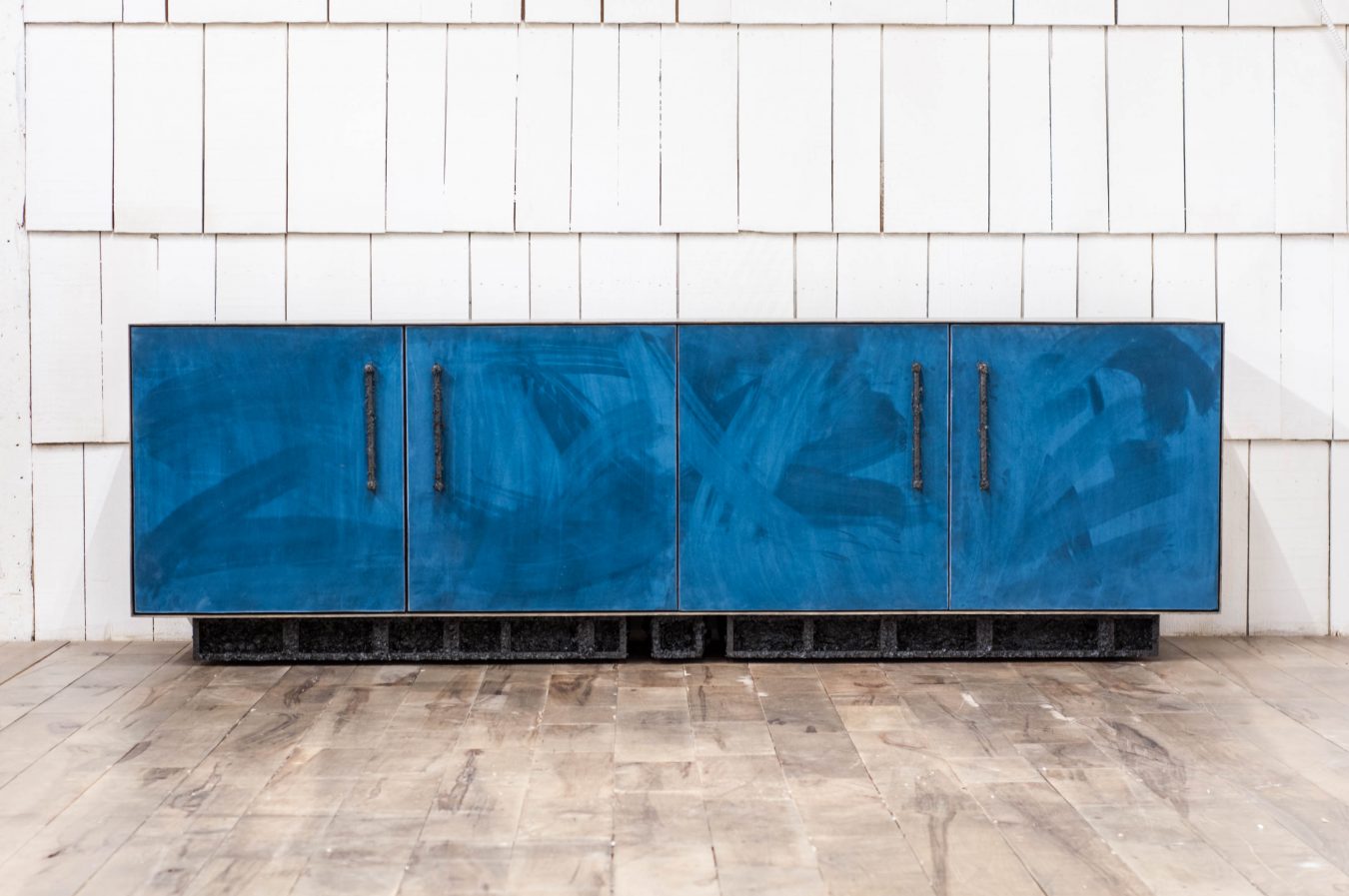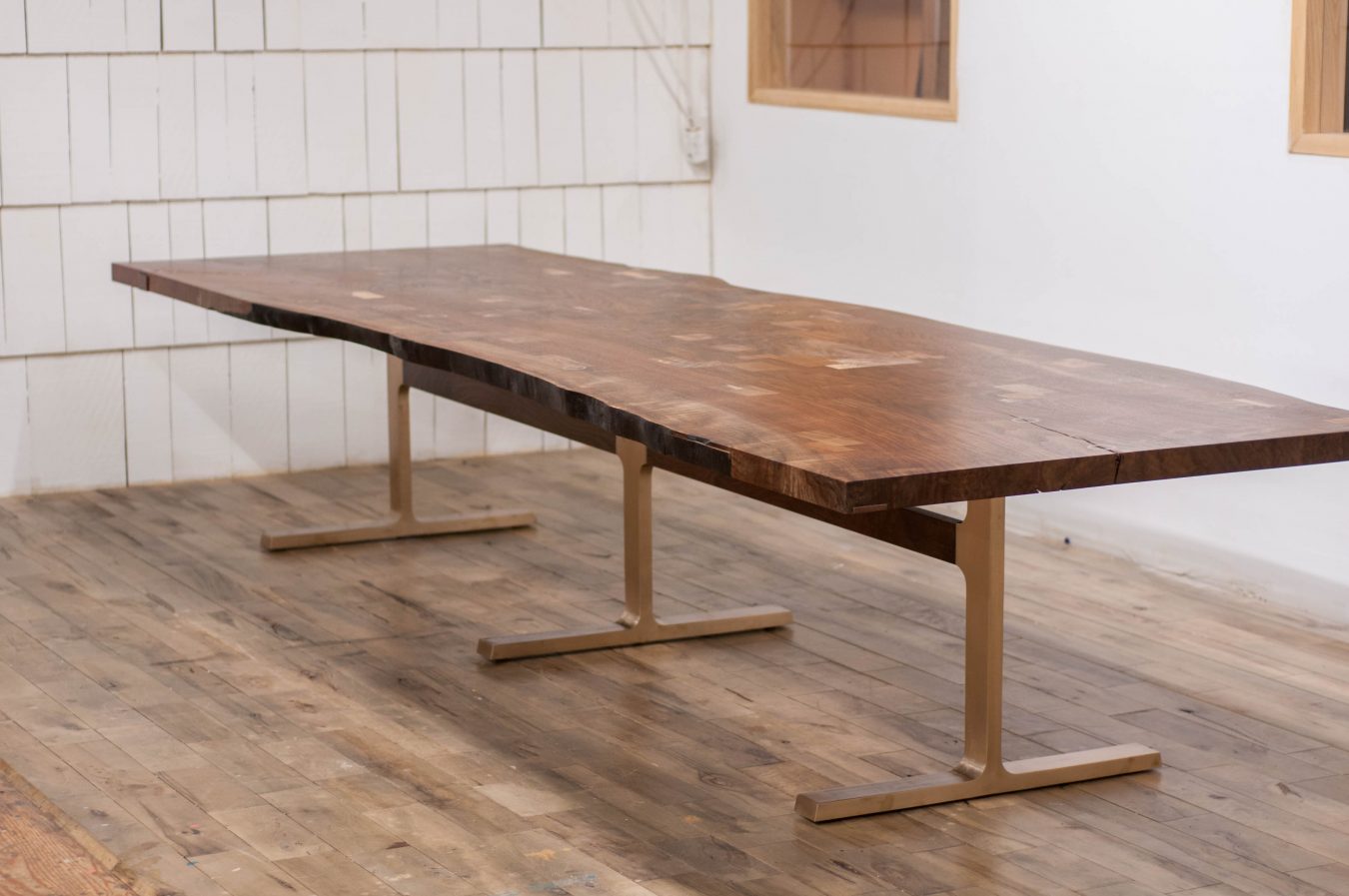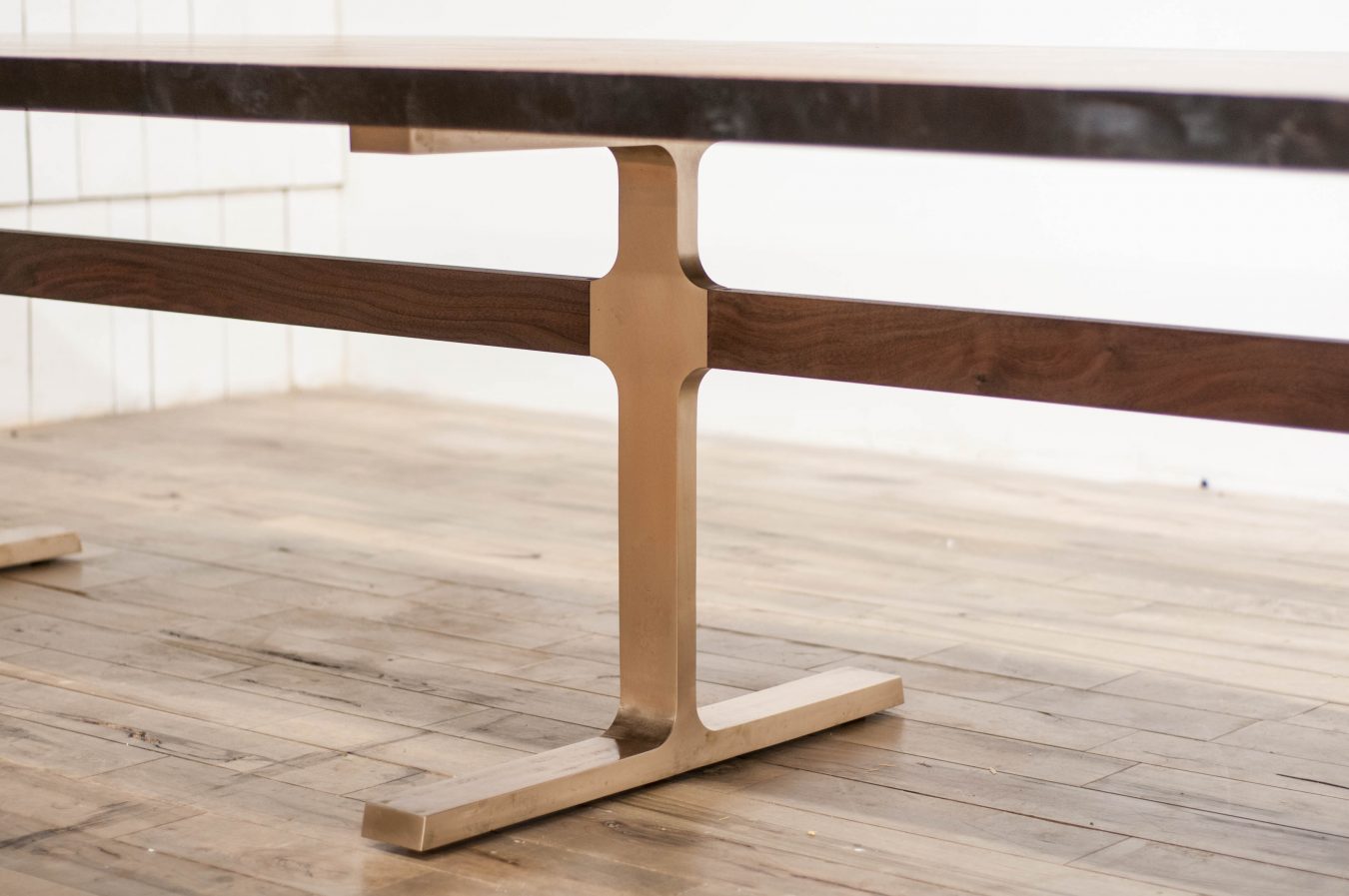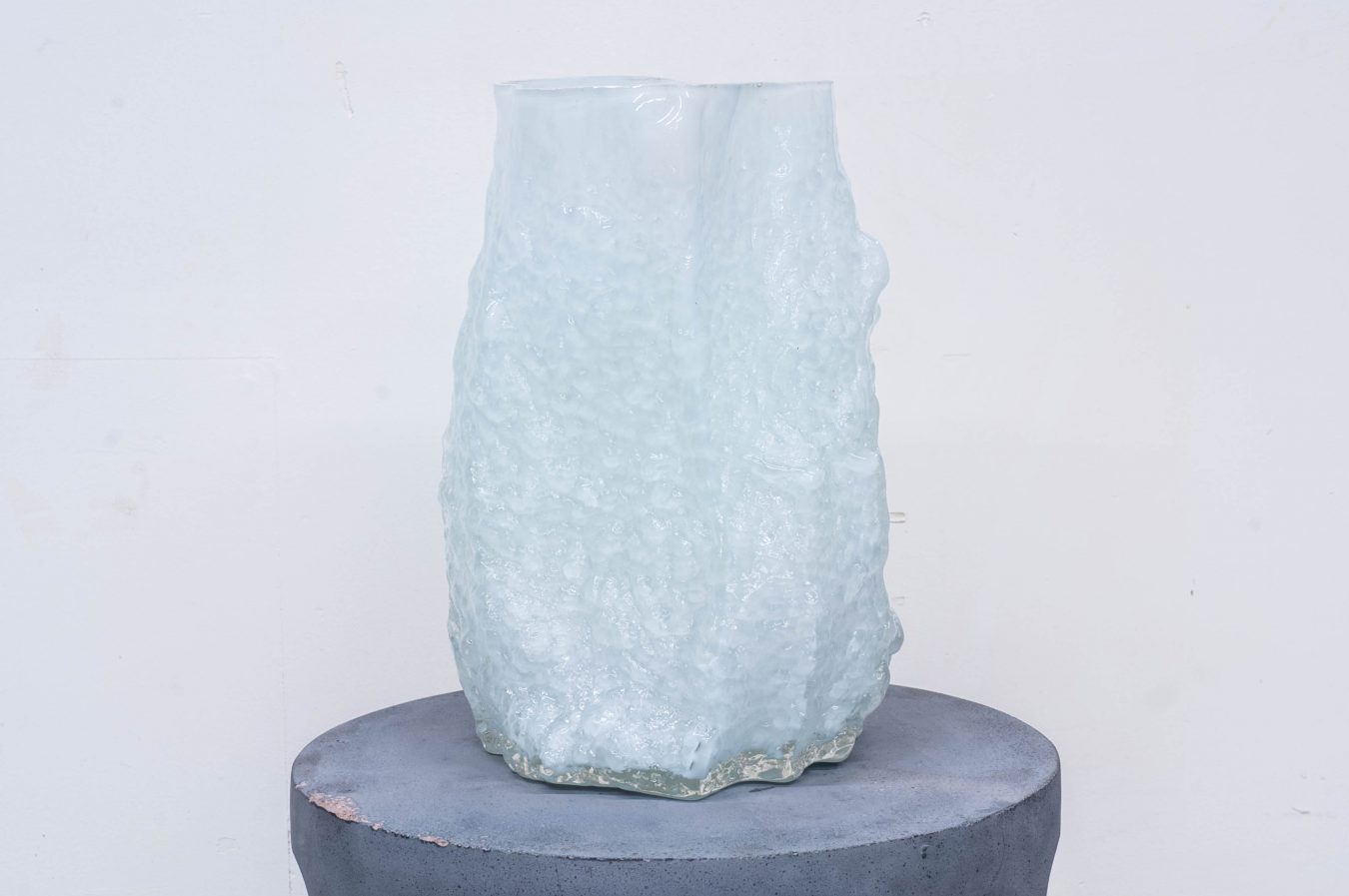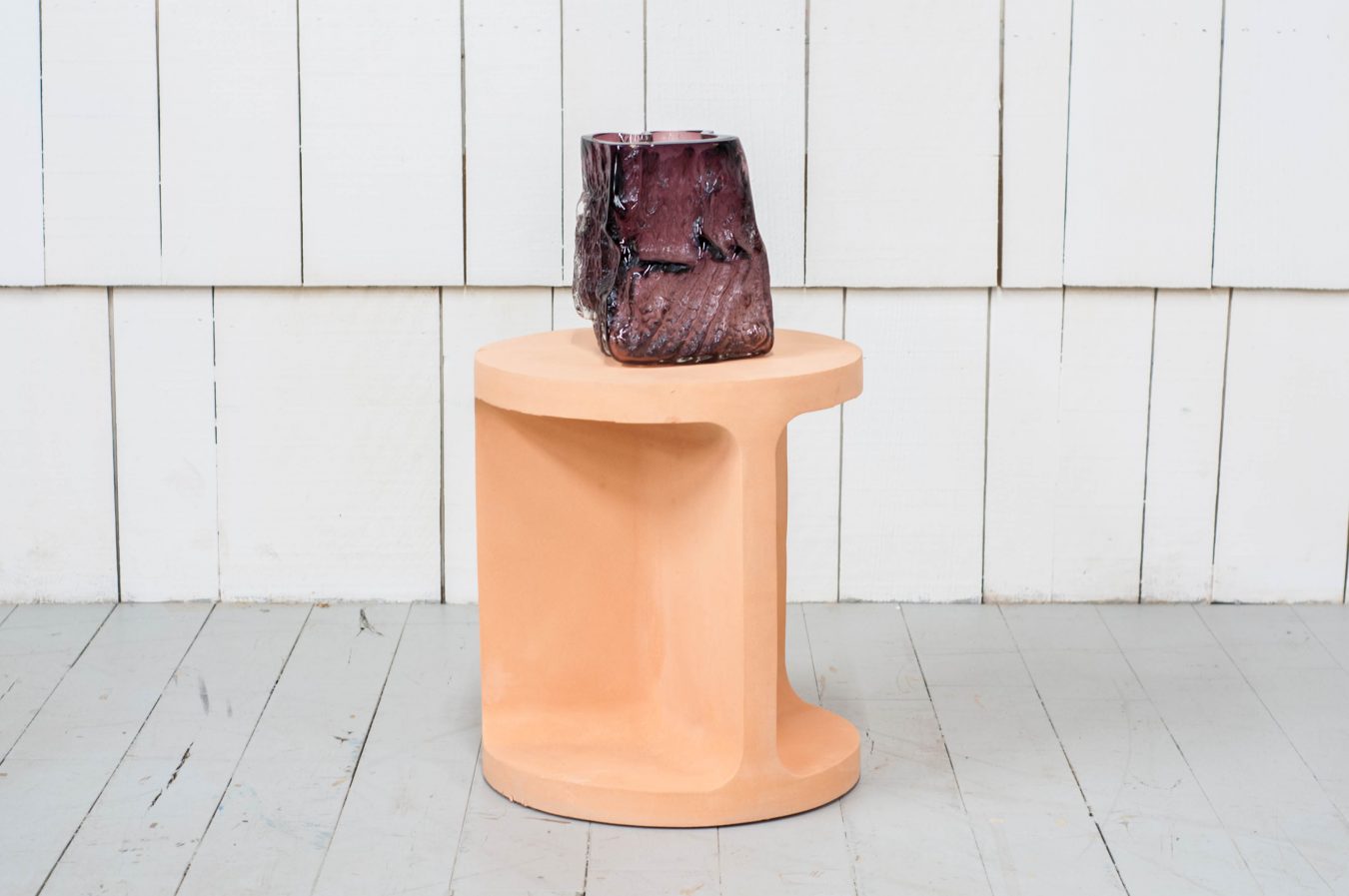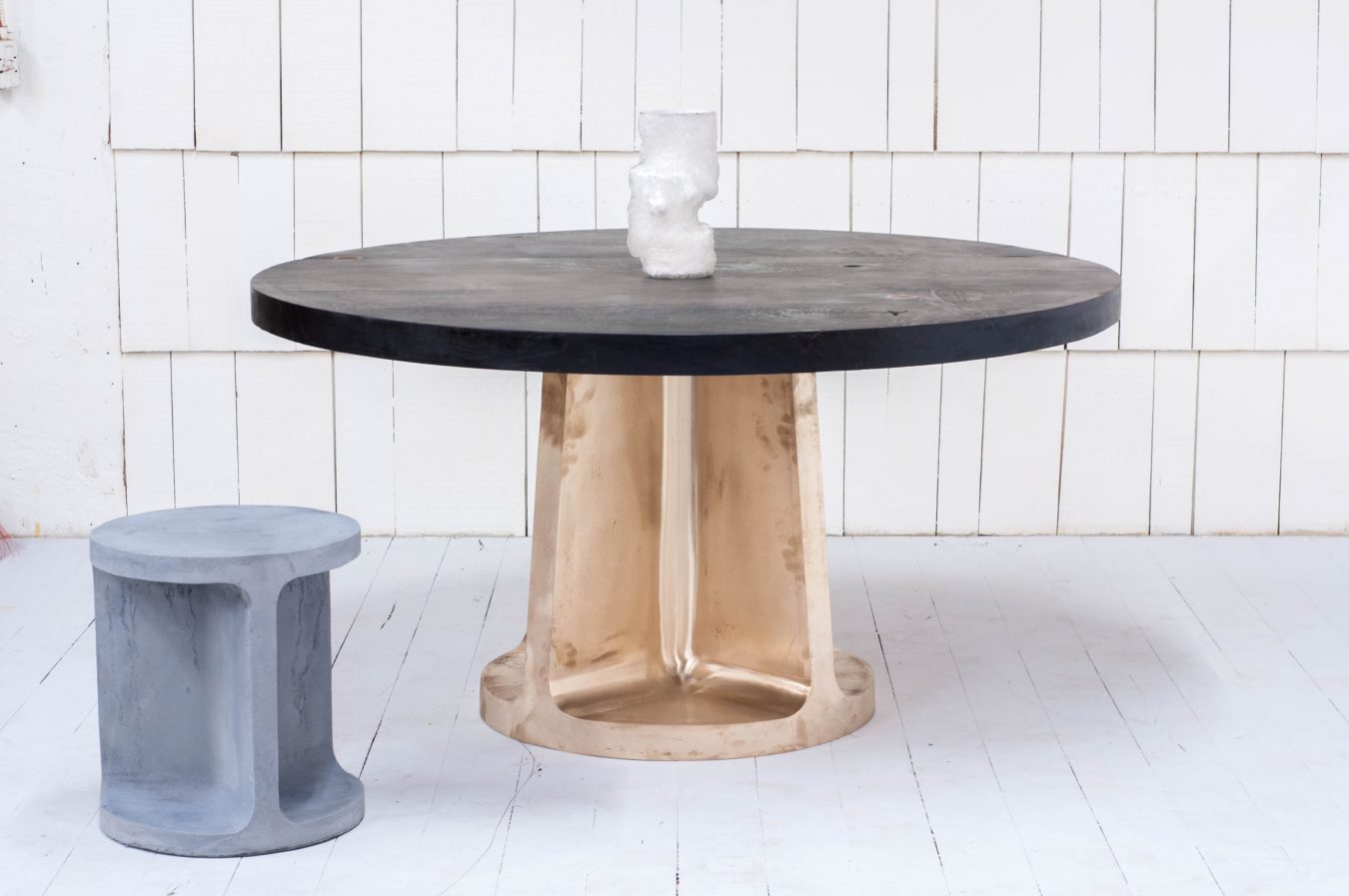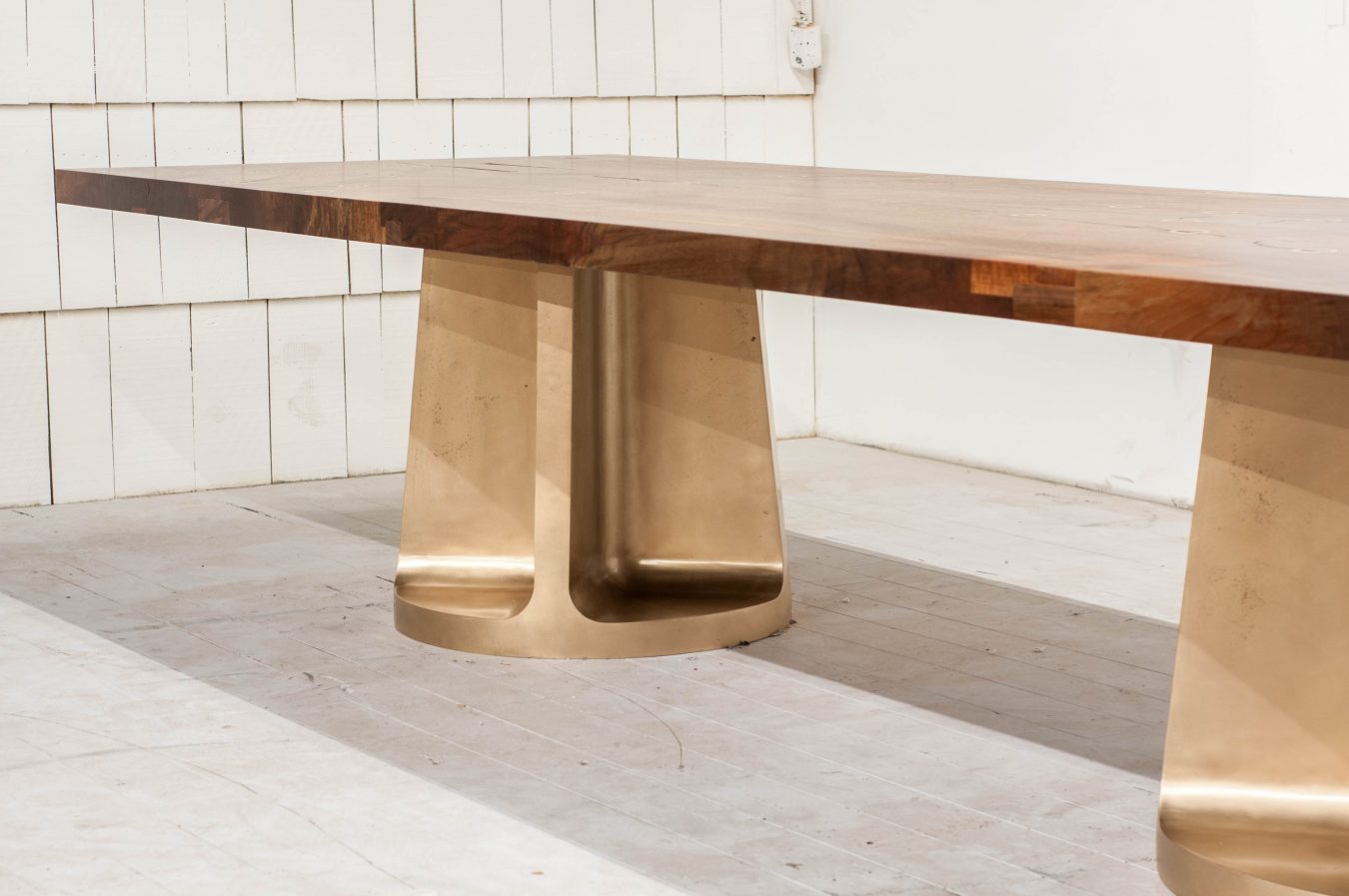Jeff Martin grabs his phone and starts scrolling through his photo feed. “Ah, here’s a good one,” he says, and holds up the screen as a video starts to play. It was filmed earlier today across the street from Martin’s Parker Street Studios workshop in East Vancouver, and shows a glassblower working away on a piece in the morning light. This is not traditional glassblowing, though—this is Jeff Martin glassblowing.
Taking stock of all the agglomerated cork that was discarded from one of his other projects, the founder of Jeff Martin Joinery decided to give it a second life as the cast for one-of-a-kind glass objects.
“I’m basically carving a cavity into the cork,” he says, listing the “primitive” tools he uses for the job: the claw end of a hammer, a paint can opener, and a couple of drill bits. “What we’re left with is this mould, and you blow a glass sphere, a glass orb, into that—and as it expands, it takes the imprint of the cork on all the walls, and then you break off the top and you’re left with a vessel shape.” Because it is such a delicate procedure, the resulting bubbled glass vases are each completely different, and are often a surprise to even Martin himself.
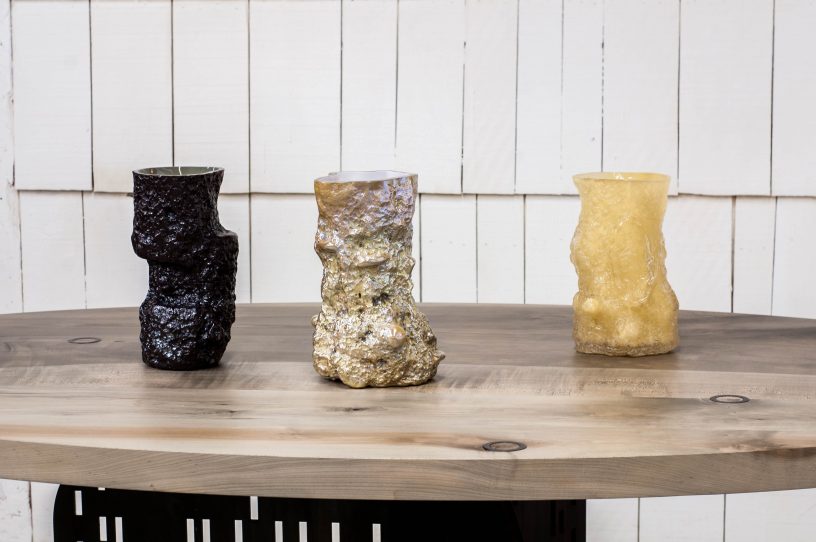
The thing with his work is that it needs to be explained. It is attractive to look at, sure, but its true beauty lies in its process. Nothing is simply what it appears to be.
Perched against a wall inside Martin’s studio, for example, is a striking wooden piece dubbed the Field Hutch—surprisingly (and charmingly), its veneer comes from Gibson Guitars. “It’s their rejects that they can’t use for guitar-building,” he says. “There are minor imperfections in it for acoustic qualities, but in terms of cabinets it’s beautiful stuff.” Giving the hutch another look, it is easy to see how its shiny, swirling surface resembles the body of a guitar.
Next Martin walks over to the Excavated Bureau, a shorter credenza-style piece that is being sent to a client in New York. Its maple doors are painted with swaths of grey and white—or at least that’s what the eye can see. In reality, Martin took oxidizing acids and swooshed them over the wood with a rag. “Instead of a paint being applied over top of a canvas, it’s a translucent chemical that actually alters the tannins in the wood, and it changes the colour of the wood itself,” he explains. The chemicals react with the wood and with each other, creating patterns and colours that Martin sometimes doesn’t see to full effect until three days later, when everything has completely dried. “It’s sort of about the lack of control,” he explains. “It’s just about gestures, it’s not really about me trying to communicate anything.” The piece sits on a base of cast pewter—the primary use of the aforementioned cork—that has a grainy, almost coral-like texture, generating a playful contrast.
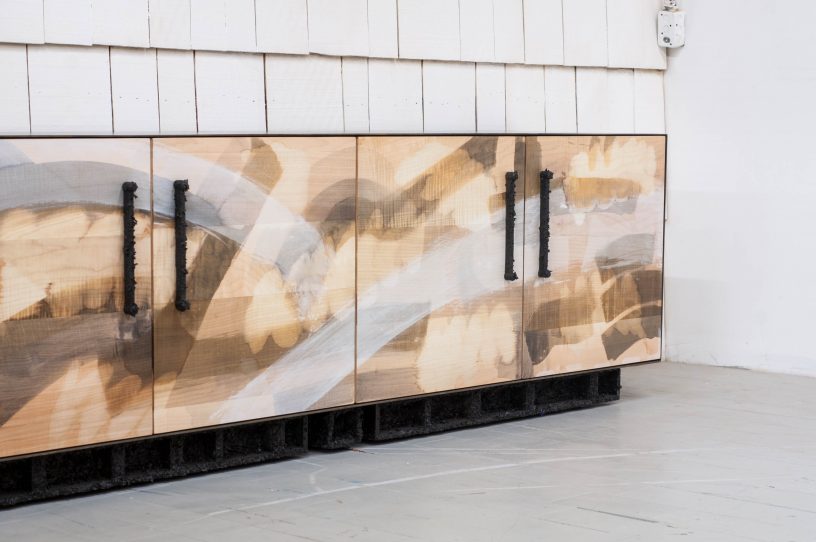
Raised on the North Shore, Martin was working in home construction when a passion for woodworking veered him into furniture, and eventually into starting his own company (which he has operated full-time since 2012). From there, he began experimenting with just about any material he could get his hands on—a practise he continues to this day. It is arguably this outcast approach, and a curiosity not bound by traditional design rules, that has allowed him to produce items with such distinction and ingenuity.
“I didn’t go to design school,” he admits. “I really came into it as an outsider and not knowing what I was doing—so it was great to do that, but it was also challenging. You pay for a lot of your own mistakes. You have to learn the industry pretty fast and in a hard way, but it also affords you, I think, the ability to see things a bit differently than other people.”
Martin’s small team uses a mix of hand techniques and machine technologies to produce the works, which are sold to clients in cities like Milan, San Francisco, and Los Angeles (surprisingly, Canadians make up an incredibly small percentage of his customer base). Components that his team does not make internally, such as cast bronze table legs, are sourced from companies around the province—or in some cases, from other workshops inside Parker Street Studios. It all means that Jeff Martin Joinery pieces end up with an aesthetic that is industrial and yet bespoke, harnessing the best qualities of artistry and innovation. “We’re always trying to figure out how to marry technology and the handcrafted aspect of the work,” Martin says. “The result is we can make stuff that hits fairly tight deadlines but retains the really tactile authorship of handmade stuff.”
These are statement pieces, standout pieces—and not just for their looks.
Read between the Designs.

